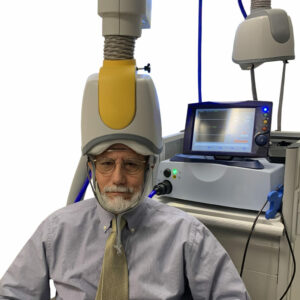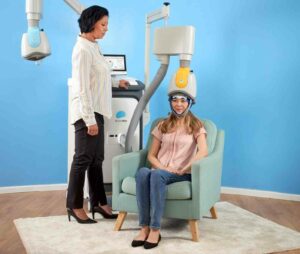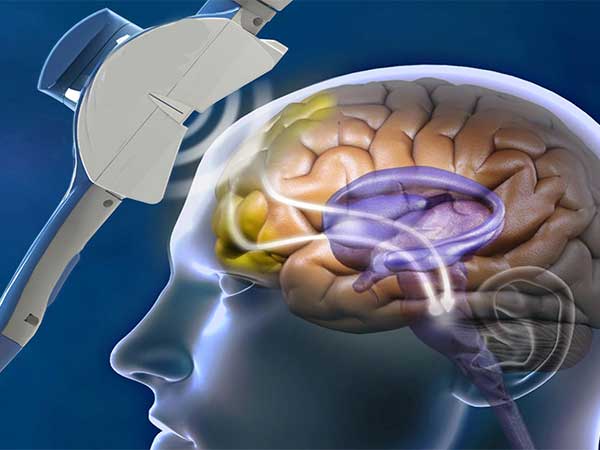Do you struggle with obsessive-compulsive disorder (OCD) and struggle to manage your symptoms? If so, you’re not alone. OCD can be a debilitating condition that affects millions of people worldwide. But what if we told you there’s a technique that could help alleviate some of the anxiety and stress associated with this disorder? DTMS – an innovative therapy method gaining popularity as an effective treatment for OCD. In this blog post, we’ll explore everything you need to know about DTMS for OCD and how it might benefit your mental health journey. So buckle up, get ready to learn, and let’s dive in!
Contents
What is DTMS?

DTMS is short for “Deep Transcranial Magnetic Stimulation” and is a non-invasive technique used to treat Obsessive-Compulsive Disorder (OCD). It works by delivering magnetic pulses through the skull and into the brain, which then stimulate brain activity. This can help reduce symptoms of OCD such as intrusive thoughts and rituals, and can also help promote relaxation.
The history of this technique dates back to the early 2000s when it was first used as a treatment for depression. Over the years, studies have found that DTMS can be effective in treating OCD, although more research is needed to determine its long-term effectiveness.
Also, DTMS is considered to be a safe and well-tolerated form of treatment for OCD. It does not involve any medications or surgery, and side effects are rare. Common side effects can include headache, dizziness, nausea, and scalp discomfort; however, these usually go away after a few treatments.
How Does DTMS Work?
DTMS works by using magnetic stimulation to target specific areas of the brain that are believed to be linked to OCD symptoms. The pulses travel through the skull, which causes neurons in the brain to fire more rapidly than normal. This increased activity affects certain chemical pathways and can lead to a decrease in OCD-related behaviors. DTMS also has the potential to reduce anxiety and improve concentration.
DTMS is most often administered by a physician or trained technician in a clinical setting, although researchers are exploring ways to deliver it at home using portable devices. The treatment usually consists of 20 sessions lasting around 30 minutes each, spread out over four weeks. During each session, the patient will receive a series of pulses while lying down or sitting in a chair. The intensity and frequency of the pulses can be adjusted depending on the individual’s needs and responses.
A course of DTMS treatment typically consists of daily sessions over a 4-6 week period. During each session, patients remain awake and alert while a special coil is placed against their scalp. The coil produces magnetic pulses that pass through the skull and stimulate specific areas of the brain.
The working of DTMS is still being explored, but research suggests that it may be able to modify the neural pathways responsible for OCD symptoms. There is also evidence that it can increase activity in areas of the brain involved in decision-making and problem-solving, helping individuals control their compulsions more effectively.
Benefits of DTMS For OCD

DTMS, or the Deep Transcranial Magnetic Stimulation technique, is a new, non-invasive treatment for OCD that is showing great promise. The therapy involves using magnetic pulses to stimulate certain areas of the brain that are believed to be involved in the development of OCD. Studies have shown that DTMS can be effective in reducing OCD symptoms and improving quality of life.
Some of the benefits of DTMS include:
Helps To Control Obsessive Thoughts
DTMS helps to reduce the frequency and intensity of intrusive thoughts associated with OCD. The magnetic stimulation provides a soothing effect that can interrupt obsessive thought patterns, allowing those struggling with OCD to gain better control over their symptoms.
Improves Cognitive Function
DTMS has been shown to improve cognitive function, including memory and concentration. This can help those with OCD better focus on tasks and complete them without being distracted by intrusive thoughts.
Reduces Anxiety Symptoms
DTMS also helps reduce anxiety symptoms associated with OCD, such as panic attacks and phobias. The calming effect of the stimulation can help to reduce feelings of anxiousness, allowing those with OCD to better manage their symptoms.
Reduces Severity Of Symptoms
DTMS is effective in reducing the severity of OCD symptoms. The magnetic pulses can break up patterns of obsessive behaviors, leading to an overall decrease in the intensity and frequency of obsessions and compulsions.
Effectiveness
An extensive amount of research has been conducted on the effectiveness of DTMS in treating OCD, and the results have been encouraging. Studies have found that a majority of patients treated with DTMS saw an overall improvement in their symptoms after treatment.
Limitations of DTMS For OCD
The use of DTMS for OCD is very limited. It may only be used as a treatment option if the person with OCD has not responded to other treatments and/or medications.
Some of the limitations of DTMS for OCD are:
- It can be expensive and time-consuming as the treatment may need to be repeated multiple times over weeks or months. This can also be difficult for those with busy schedules.
- There may be side effects associated with DTMS, such as headaches, scalp discomfort, and fatigue. These can vary from person to person but could limit the effectiveness of the treatment.
- Not everyone will respond positively to the treatment and some people may not experience any improvement at all after undergoing DTMS.
- It is not suitable for those with certain medical conditions such as epilepsy, or those who have implanted medical devices such as pacemakers.
- There are limited studies that have evaluated the long-term effects of DTMS and its impact on OCD symptoms over the long term.
How To Find a Qualified DTMS Provider?

There are many things to consider when looking for a qualified DTMS provider. Here are a few key points:
- Make sure the provider is licensed and accredited.
- Ask about the provider’s experience and success rates with treating OCD.
- Inquire about the length of treatment and what kind of support is available after treatment.
- Find out if the provider uses an evidence-based approach to DTMS treatment. It may be also helpful to speak to any previous patients of the provider.
- It is important that you feel comfortable and safe with your doctor or therapist, so make sure that he or she listens to your needs and concerns. A qualified DTMS provider will be willing to answer all of your questions and provide a clear explanation of their approach to treatment.
Some of the sources that can help you find a qualified DTMS provider include:
- Online Directories: One main source of qualified DTMS providers is online directories. These directories provide detailed listings with contact information and profiles for each provider.
- Referral Services: Another option is to use referral services to find a qualified provider. Many of these services are free and can help you locate the appropriate provider in your area.
- Professional Organizations: Professional organizations may also be able to point you in the right direction. These resources can help you find a qualified provider with specialized experience in treating OCD.
- Websites: An additional source of information are websites providing detailed information about DTMS providers and their services.
Finding the right DTMS provider is an important part of successful treatment for OCD. Taking the time to research and choose a qualified professional can make all the difference in successfully overcoming your OCD symptoms.
Conclusion
In conclusion, DTMS is an effective technique for treating OCD symptoms and can be used to help patients manage their obsessive-compulsive disorder. This type of treatment has been proven to reduce the frequency, intensity, and duration of intrusive thoughts, which allows those suffering from OCD to live a more productive life. If you are looking for an alternative way to treat your OCD, consider giving DTMS a try and see how it can help you achieve lasting relief from your symptoms.
However, it is important to remember that DTMS is not a cure and should be used in conjunction with other treatments such as medication and therapy. Additionally, it can be expensive and time-consuming, so make sure to research your options carefully before beginning treatment.
For more information and guidance, please contact MantraCare. OCD is a mental health disorder characterized by obsessions and compulsions. If you have any queries regarding Online OCD Counseling experienced therapists at MantraCare can help: Book a trial OCD therapy session


